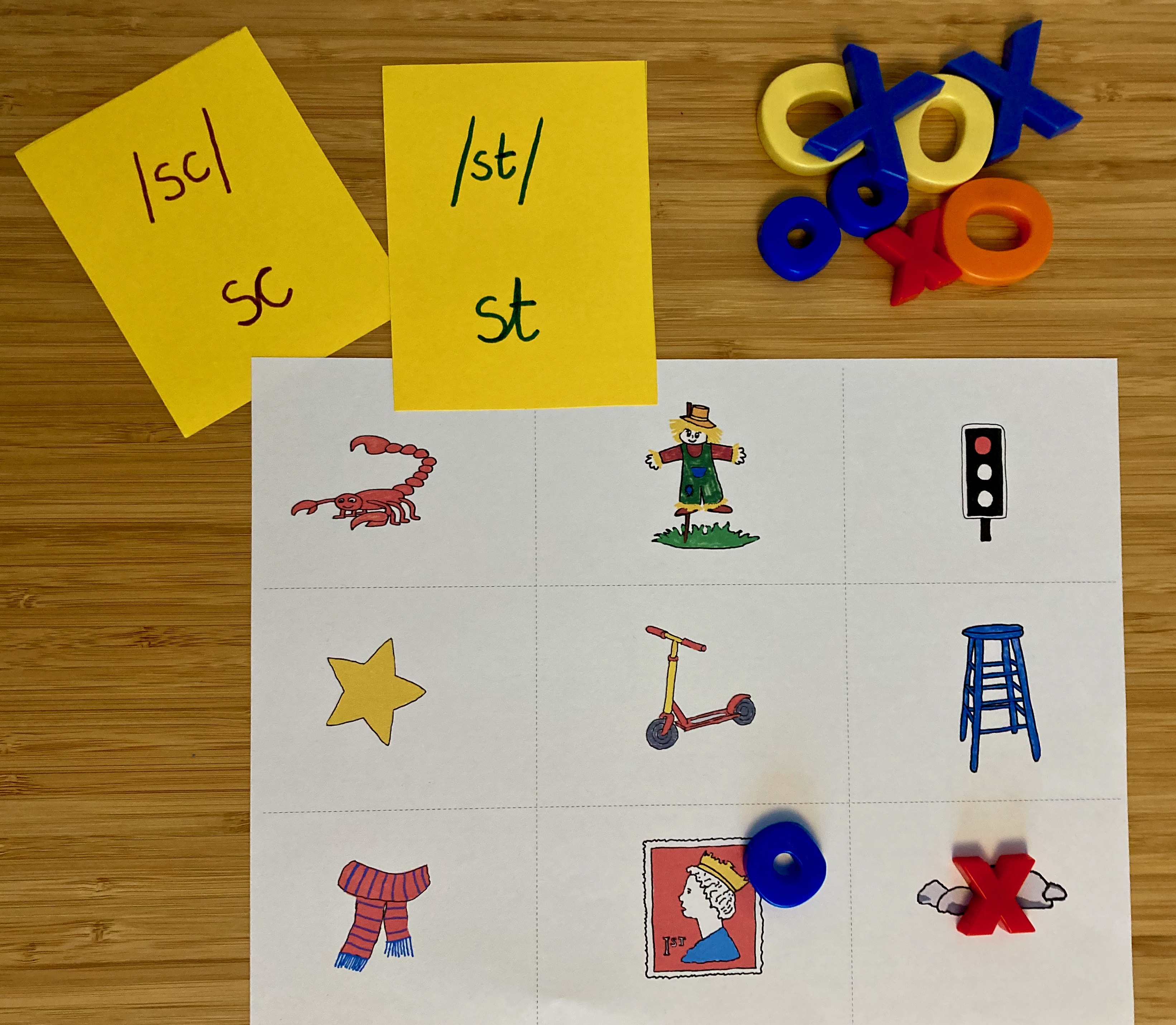Playing with /st/ and /sc/
In everyday speech, the aspiration of the unvoiced plosive phonemes /t/ and /k/ can sometimes be lost when they follow /s/ and a child may pronounce “st” as /sd/, e.g. saying sdop instead of stop, and “sc” or “sk” as /sg/, e.g. saying sgaf instead of scarf.
Playing games, like this version of /st/ /sc/ noughts and crosses, can help kids develop sound-symbol links (phoneme to grapheme links) and an awareness of speech dynamics. You can also use this activity to get them thinking about word structure and where certain sounds and letter clusters might appear in words.
You can find a free, printable game board here.
You will need:
-
Mirror
-
Collection of objects, or pictures of things, beginning with the phonemes (speech sounds) /st/ and /sc/
-
Whiteboard and pen/pencil and paper
-
3 x 3 grid with images of objects beginning with focus sounds (can be laminated for reuse)
-
2 cards placed by grid; one with grapheme “st” written on it and one with grapheme “sc” (visual prompt for players)
-
2 differently coloured pens, or sets of 5 counters e.g. 5 red and 5 blue counters (one colour for each player/team)
What to do:
-
Demonstrate the articulation of the sound /st/. Encourage your child/children to copy it whilst looking in a mirror. Look at and talk about the mouth movements used to make the sound.
-
Repeat Step 1. for the speech sound /sc/.
-
Hold up an object, or picture of something, that begins with /st/.
- Encourage your child/children to name the object, e.g. stone.
- Ask, "What sound does stone begin with?" Encourage your child/children to say, "Stone begins with /st/."
- Ask "How do you write /st/?" Encourage your child/children to say, "the sound /st/ is 'st' " as they write the grapheme ‘st’ on a whiteboard. (You may need to model this step first.)
Top tip: Encourage your child/children to use letter names rather than letter sounds when identifying the letters in a grapheme.
-
Hold up an object, or picture of something, that begins with /sc/. Repeat Step 3 for this phoneme.
-
Player/team going first chooses a picture on the game board. They name the object represented by the picture, e.g. scarf, and say e.g. “scarf begins with /sc/,” and write the grapheme "sc" on their whiteboard/paper.
- If they are correct, they draw a circle round, or place a counter on the picture.
- If they make a mistake in their response, they cannot claim the picture and you should model the correct response saying, e.g. "scarf, the sound /sc/ is ‘sc’ ” as you write the grapheme ‘sc’ on a whiteboard/paper.
-
The other player/team then chooses a picture on the game board. They name the object represented by the picture, e.g. stamp, and say, e.g. “stamp begins with /st/” and write the grapheme "st" on their whiteboard/paper.
- If they are correct, they draw a cross over the picture, or place a counter on it.
- If they make a mistake in their response, they cannot claim the picture and you should model the correct response saying, e.g. "stamp, the sound /st/ is ‘st’ ” as you write the grapheme ‘st.’
-
The winner is the first player/team to have three symbols/counters in a vertical, horizontal or diagonal line.
-
If all the squares are filled without either player/team winning, the game is a draw.
Top tip: This game can be adapted to suit the developmental level of the child, or the game board used in other activities, e.g. /st/ /sc/ bingo, matching pairs.
Other posts you might like:
